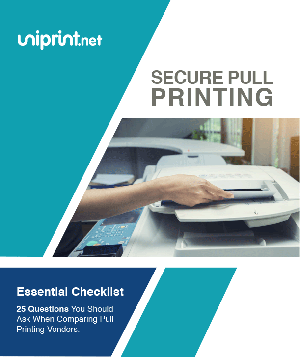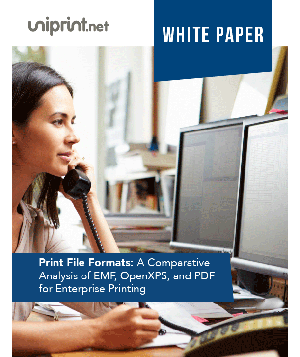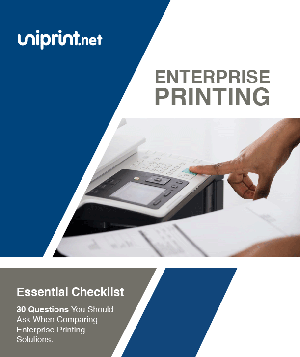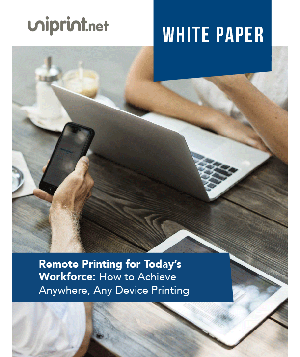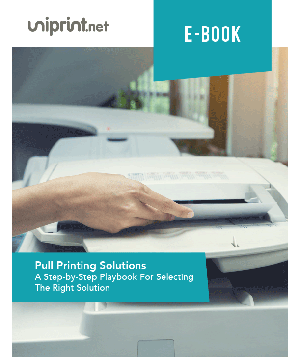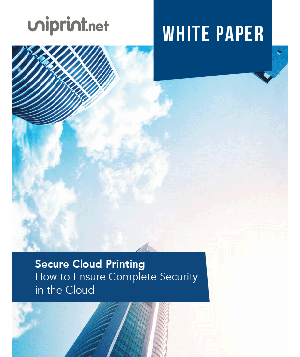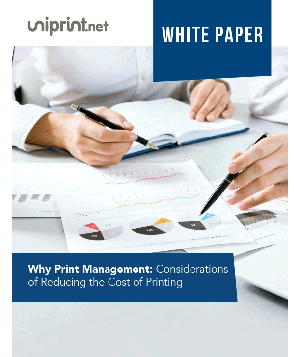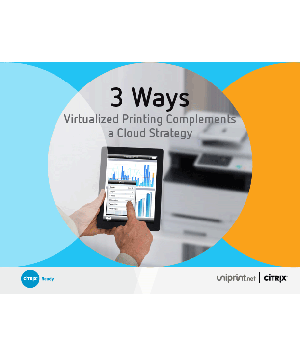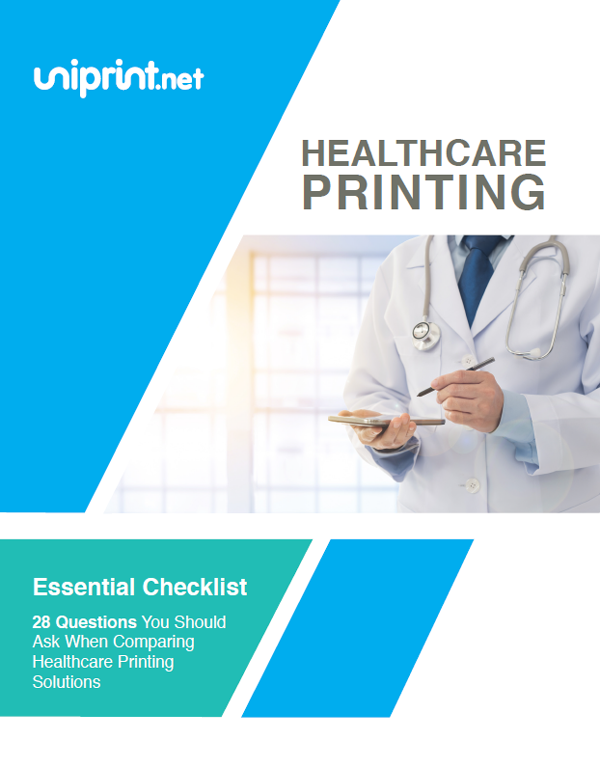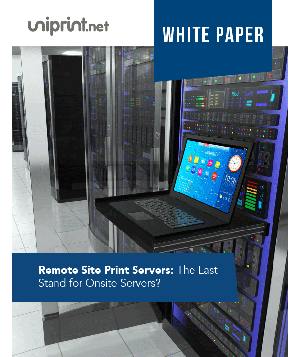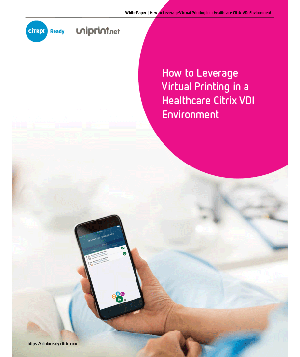Serverless Printing 101: A Beginner’s Guide to Going Server-Free with Print
Printing infrastructure is evolving rapidly, and serverless printing is quickly becoming a game-changer for companies of all sizes. Traditionally, print servers have managed and routed print jobs, but serverless printing eliminates the need for these servers entirely. As a result, organizations experience reduced costs, streamlined IT management, enhanced security, and an improved experience for end users—especially those in hybrid or remote work environments. In this guide, we’ll cover everything you need to know about serverless printing, from its key benefits to implementation tips, to help you decide if it’s the right fit for your business.
What is Serverless Printing?
Serverless printing, as the name suggests, allows organizations to manage and facilitate printing without requiring dedicated print servers. Rather than relying on a central server to process and route each print job, serverless printing enables direct connections between devices and printers. This process is typically managed through cloud-based solutions, which simplifies the entire print management landscape.
How It Works: In a serverless setup, devices communicate directly with networked printers, often through a cloud-based interface. This approach bypasses traditional print servers, streamlining the print job process and enhancing efficiency.
Comparison to Traditional Print Servers: Unlike traditional environments, where print servers require significant IT support, serverless printing is more resilient and requires fewer resources. Therefore, businesses can save time and money while improving reliability.
Key Benefits of Serverless Printing
Serverless printing offers numerous advantages, making it an attractive option for organizations seeking to modernize their print management. Here are some of the primary benefits:
- Reduced IT Costs: By eliminating the need for dedicated print servers, companies can significantly reduce IT expenses, including hardware, maintenance, and licensing costs.
- Streamlined IT Management: With serverless printing, IT teams spend less time troubleshooting. There’s no server maintenance, fewer help desk calls, and minimal print driver management, so IT departments can focus on more strategic projects.
- Improved Security: Serverless printing solutions often include advanced security features, such as encryption and multi-factor user authentication. Additionally, by eliminating the print server, you also eliminate any vulnerabilities associated with the print spooler.
- Enhanced User Experience: Since users connect directly to network printers, they experience faster and more reliable printing. As printers can be distributed automatically by the print management system, end users don’t have to worry about the hassle of adding printers.
- Sustainability and Cost Savings: Serverless printing supports print optimization, which reduces unnecessary printing and promotes eco-friendly practices. With data insights, companies can track usage and encourage employees to make more sustainable choices.
How Serverless Printing Works: Key Components
Several core components make serverless printing possible, each contributing to a more streamlined and secure experience:
- Cloud-Based Print Management: Cloud-based platforms allow organizations to centrally control and monitor printing without an on-premises print server. This simplifies print management across multiple locations and allows IT to manage updates, settings, and permissions from one dashboard.
- Direct Printer Access from Workstations: In serverless printing, users can connect directly to networked printers without routing through a central server. Often, this is achieved through native drivers or compatible software, supporting seamless direct printing.
- Embedded Printer Software: Many printers now come equipped with embedded software that connects directly to the cloud. This feature simplifies serverless printing since these printers can handle jobs independently and securely.
Types of Businesses That Benefit from Serverless Printing
Serverless printing can benefit most organizations, but it’s particularly advantageous for:
- Small to Medium-Sized Businesses (SMBs): SMBs benefit from serverless printing’s low-cost, low-maintenance nature. Without a dedicated IT team, they can easily manage print operations with minimal hassle.
- Enterprise Organizations with Multiple Locations and Many Printers: Large organizations with distributed teams gain flexibility from serverless printing. Employees in multiple offices or working remotely can print seamlessly, without requiring IT to handle server setups.
Interested in trying Serverless Printing for FREE? Start your 30-day free trial today!
Steps to Transitioning to Serverless Printing
Transitioning to serverless printing is straightforward but requires strategic steps for a smooth implementation. Here’s how to get started:
- Evaluate Existing Print Environment: Assess current printing needs, costs, and challenges to identify areas where serverless printing can add value.
- Select a Cloud-Based Print Management Solution: Choose a cloud-based solution that aligns with your business’s size, industry, and security requirements.
- Implement a Rollout Strategy: Roll out serverless printing gradually by piloting it with select users or departments. Train employees on how to connect and use the system, and ensure IT is available to support the transition.
- Monitor and Optimize: Use analytics from the print management platform to monitor usage and performance. Make adjustments as needed to enhance efficiency and reduce unnecessary printing.
Common Challenges and Considerations
While serverless printing offers many benefits, there are some challenges to keep in mind:
- Device Compatibility: Some older devices may not support direct printing or cloud-based print management. Therefore, it’s essential to verify compatibility with your selected serverless solution.
- Network Reliability: Since serverless printing relies on network connections, a stable network is essential. Make sure your network can handle increased traffic, especially if remote or hybrid workers connect to office printers.
- User Training and Adaptation: Introducing new technology requires an adjustment period. Thus, it’s important to provide training and support to help employees adapt to the serverless printing system, encouraging efficient, sustainable printing practices.
Conclusion
Serverless printing is an innovative, cost-effective approach that streamlines print management while improving security, user experience, and IT efficiency. By moving to a server-free setup, organizations can enhance productivity, support multiple office work flexibility, and reduce print-related help desk tickets. As more businesses adopt modern solutions for their work environments, serverless printing becomes an excellent option for companies looking to stay agile and efficient.
Are you ready to explore serverless printing for your organization? Connect with a cloud print management provider to see how a server-free setup could transform your print operations.
Try UniPrint InfinityCloud
Whether you are printing at the office or at home, UniPrint InfinityCloud is the cloud printing solution of choice for your organization.
Recent Posts
- Why Traditional Printing No Longer Works In Your Office
- How to Streamline and Modernize Printing in Healthcare Environment
- When Print Management Becomes a Crisis: How to Act Fast
- 10 Ways Cloud Print Management Can Increase Security to Prevent Data Loss and Increase Productivity
- Serverless Printing 101: A Beginner’s Guide to Going Server-Free with Print
- Cloud Printing Management: The Secret to Fewer Help Desk Tickets
- Why Should You Outsource Printing Management? A Comprehensive Overview
- How Cloud Print Management Prevents Print Server Vulnerabilities
- Is Printing Dead?
- How InfinityCloud Outshines Microsoft Universal Print in 2024
- See All



